Alternative approach successfully addresses localized conditions
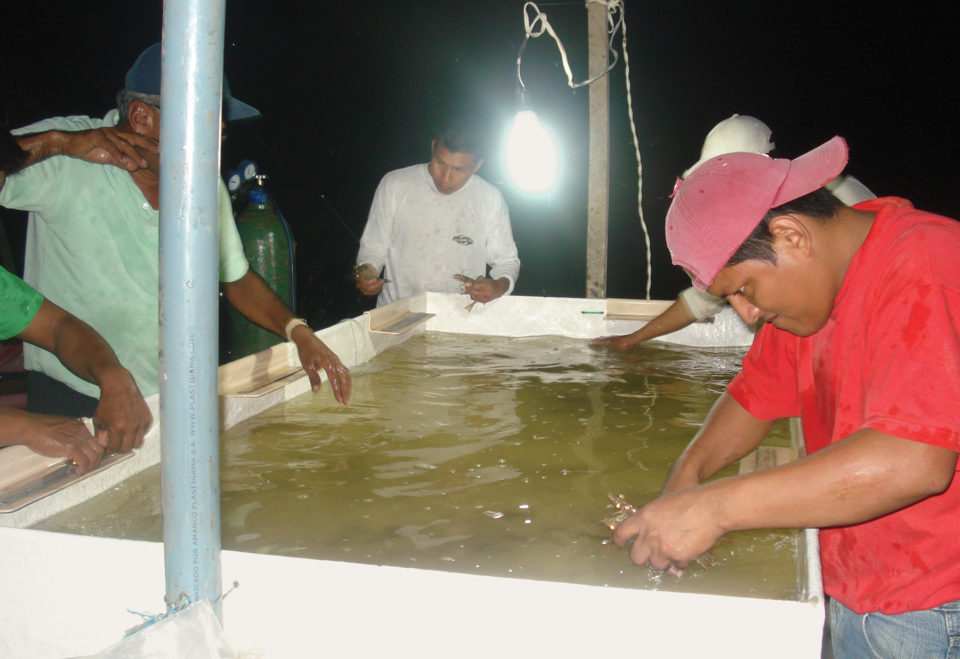
By enabling direct, high-intensity selection of broodstock from ponds, non-SPF approaches facilitate breeding schemes specifically designed to minimize the impacts of genetic-environment interactions.
While operating under extensive production system models at low stocking densities, Ecuador’s shrimp-farming industry was devastated by white spot syndrome in 1999. Discouraged by the poor results and susceptibility of specific pathogen-free (SPF) animals to the diseases present, many in Ecuador believed that breeding from disease survivors, without particular concern for their disease carrier status, would be the only way forward if their shrimp industry was to rebuild around the same extensive production models and ideals.
More than a decade later, Ecuador’s unconventional and non-SPF approach to shrimp health and breeding seems to have been successful (Fig. 1), yielding the development of shrimp lines that cope well with diseases. This enabled the full recovery of the national industry under conditions where white spot virus is consistently present, especially when the temperatures drop below 24 degrees-C in the designated summer season.
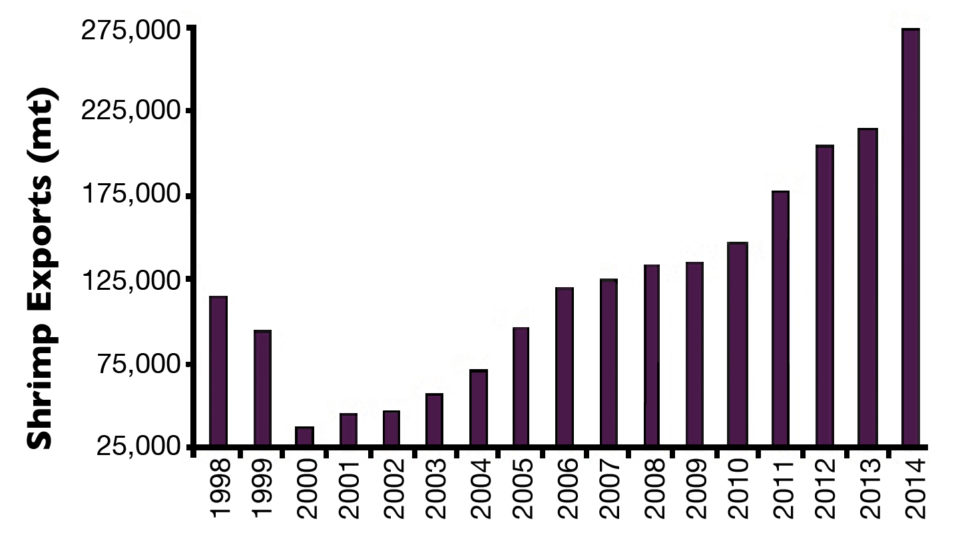
These robust shrimp lines are in high demand from many parts of the world to improve the disease tolerance/resistance and robustness of the more susceptible SPF stocks. This trend has gained particular momentum after the emergence of early mortality syndrome in Asia and its recent expansion to Mexico.
New disease hypotheses
New hypotheses on the acquisition of natural disease resistance/tolerance mechanisms by shrimp have recently been proposed by Dr. Timothy Flegel. These new hypotheses postulate that for natural mechanisms of shrimp disease tolerance/resistance to take place, direct exposure to the pathogens is a necessary condition – one that is obviously not present and even specifically precluded in the context of the SPF model.
Ecuador’s unconventional shrimp health and breeding path seems to have anticipated these new hypotheses, and its results seem to corroborate the postulates.
Non-SPF breeding
This article reports on a specific breeding program initiated four years ago and established through a synergistic association between the largest maturation facility in Ecuador and a group of shrimp producers with a total of nearly 5,000 ha in production.
To keep the program as simple and low-cost as possible, its genetic objectives were defined by the shrimp producers to focus only on the improvement of the growth rates at their farms. Survival was considered strictly a management issue not requiring specific genetic strategies. The program adopted a localized line-based breeding strategy, with stringent mass selections for growth at commercial harvest end points for the different associates.
Genetic selections are done directly from commercial ponds. Different lines have been developed, with inbreeding levels monitored through genetic marker approaches. Interactions between genetics and the environment (G x E) are addressed by the development of different commercial products for the shrimp producers. At any time, each associate has at least one maturation room stocked with broodstock derived and selected from its own farms. Female broodstock are screened for infectious hypodermal and hematopoietic necrosis virus, with a number of products certified from IHHNV-free females.
Program results
With these approaches, the genetic program has been able to yield a positive phenotypic trend with an average 7.8 percent annual phenotypic gain for commercial growth rates, while commercial survival rates have been kept fairly constant. Figures 2 through 4 document the growth, survival and productivity trends registered for three model farms in the program since it was initiated in 2011. These three farms formed the benchmark against which the breeding progress was evaluated.
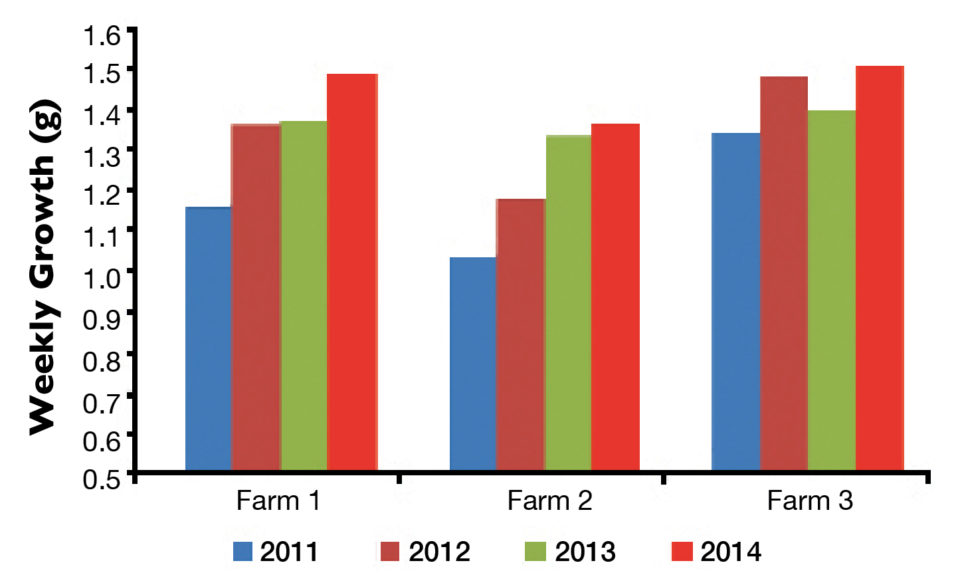
Most farms served by the breeding program operate under a three-phase grow-out system. Average growth rates in 2011 were nearly 1.18 g/week (Fig. 2), with an average survival of 54.5 percent (Fig. 3) at 12 shrimp/m2 and an average productivity of 2,515 lb/ha/cycle (1.14 MT/ha/cycle, Fig. 4). In 2014, at 12.5 shrimp per square meter, the average growth at the model farms was 1.45 g/week, with an average survival of 55.3 percent and average productivity of 3,006 pounds/ha/cycle (1.36MT/ha/cycle).
Productivity at the model farms increased from 24.8 lb/ha/day (11.25 kg/ha/day) in 2011 to 28.0 lb/ha/day (12.70 kg/ha/day) in 2014. Assuming a pricing standard of U.S. $0.11/g, sales increased from $48.60/ha/day in 2011 to $65.90/ha/day in 2014. Average commercial harvest weights were 17.8 g in 2011 and 21.3 g in 2014.
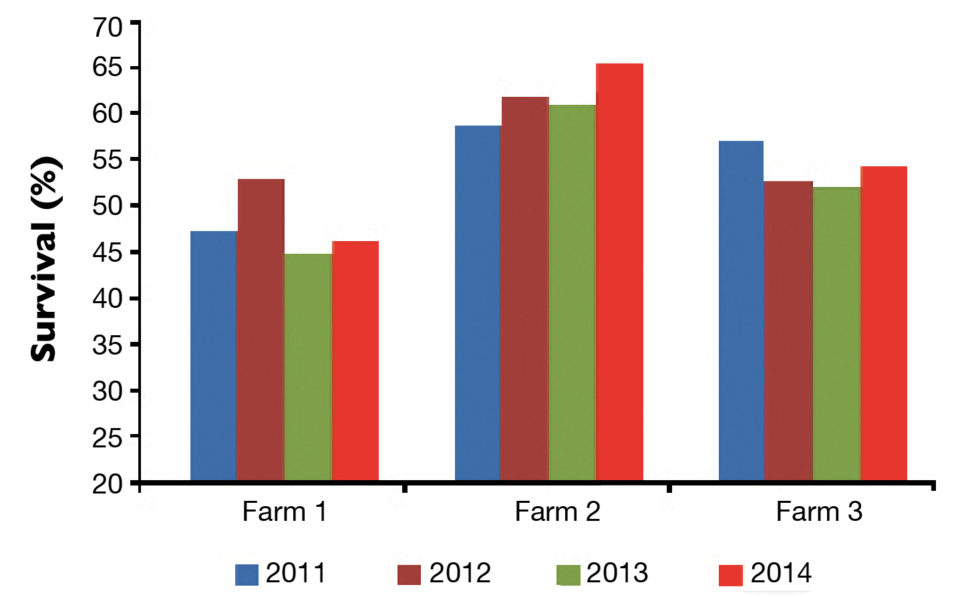
Perspectives
The Ecuadorian non-SPF extensive production system is a model that so far has served well in a very specific economic and production context. It is certainly not suitable for a number of other economic and production scenarios, so is not a universal panacea for shrimp production elsewhere. But non-SPF breeding approaches may have merits that warrant further consideration, especially concerning the breeding of animals better adapted to specific local conditions.
By enabling direct, high-intensity selection of candidate broodstock from commercial ponds – the real target of all breeding programs – non-SPF approaches have the additional merit of facilitating the implementation of breeding schemes specifically designed to minimize the impacts of G x E interactions. Tackling these interactions under SPF constraints can be complex and expensive.
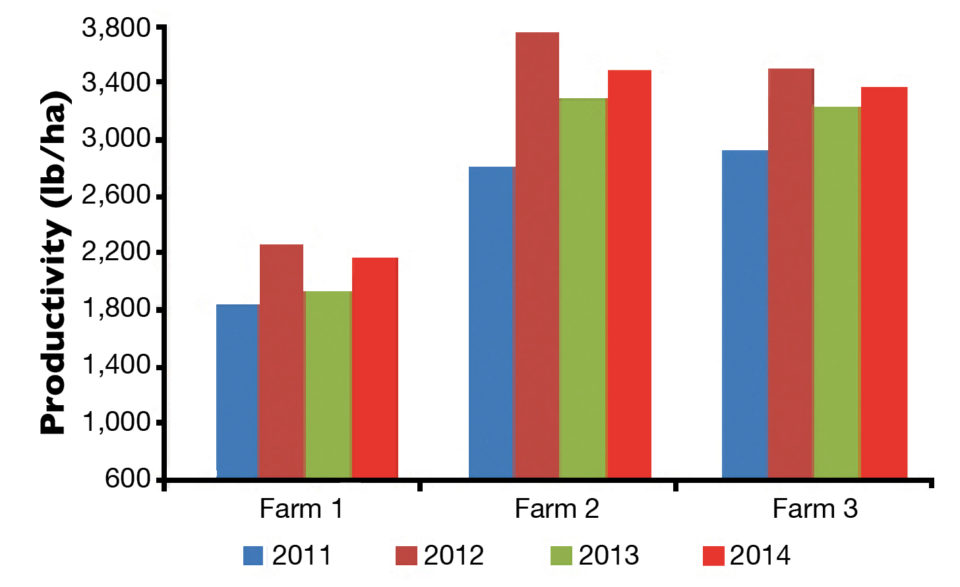
High-density, intensive shrimp production systems are likely incompatible with non-SPF approaches, but are certainly an imperative within some economic contexts. The authors encourage aquaculturists to recognize the existence of different tools and approaches for different situations and contexts.
Which approach is the most vulnerable to the emergence of new diseases, and which can most rapidly recover from them? Could the development of robust and more tolerant or resistant local shrimp lines preclude the need for wide-ranging, permanent, international broodstock movements and thus constitute a safer path with respect to the recurrent introduction of new diseases in shrimp production? Ultimately, are highly intensive shrimp production systems really sustainable in the long run for wide national areas, when all the compounding environmental, economic, social and biological issues are considered?
(Editor’s Note: This article was originally published in the July/August 2015 print edition of the Global Aquaculture Advocate.)
Authors
-

João L. Rocha, Ph.D.
Texcumar and Productores de Camarón de El Oro
Centro de Reproducción y Mejoramiento Genético de Camarón
Km. 2 ½ Vía San Pablo-Monteverde
Provincia de Santa Elena, Ecuador -
Rafael Verduga
Texcumar and Productores de Camarón de El Oro
Centro de Reproducción y Mejoramiento Genético de Camarón -
Hugo Mario Armijos
Texcumar and Productores de Camarón de El Oro
Centro de Reproducción y Mejoramiento Genético de Camarón
Related Posts
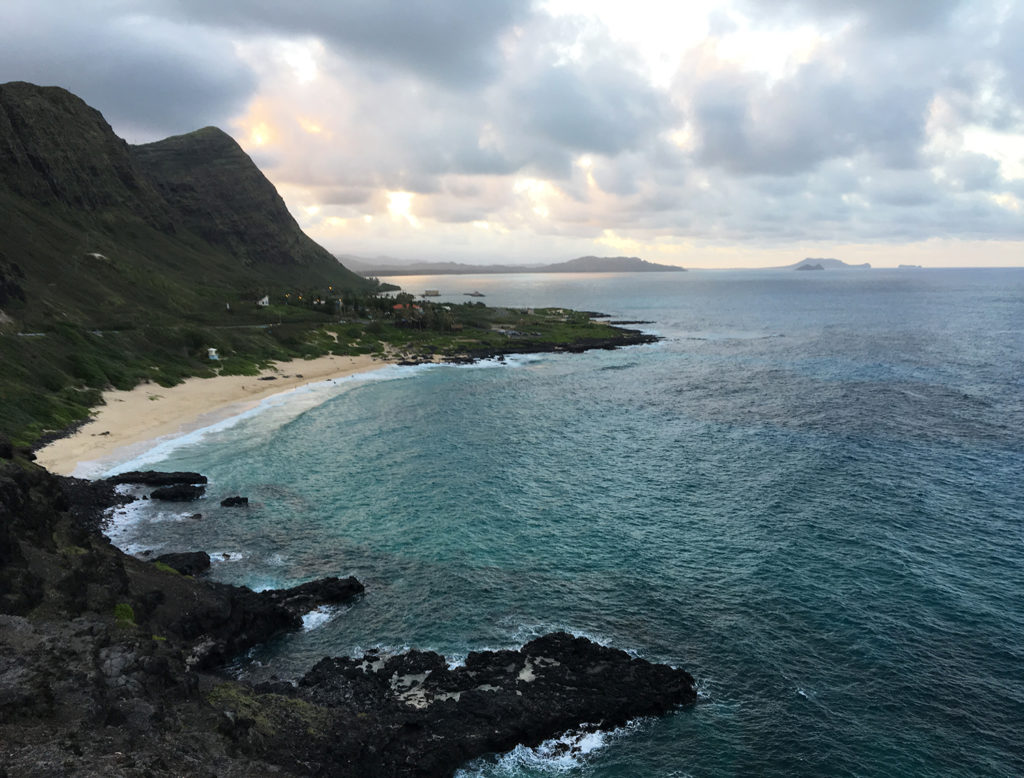
Health & Welfare
Born in Hawaii, SPF broodstock shrimp industry faces globalization
The next step for shrimp breeding will be developing animals that aren’t just disease-free, but increasingly resistant to multiple pathogens. The industry is globalizing, with suppliers setting up shop overseas. But its birthplace will always be Hawaii.

Health & Welfare
A holistic management approach to EMS
Early Mortality Syndrome has devastated farmed shrimp in Asia and Latin America. With better understanding of the pathogen and the development and improvement of novel strategies, shrimp farmers are now able to better manage the disease.
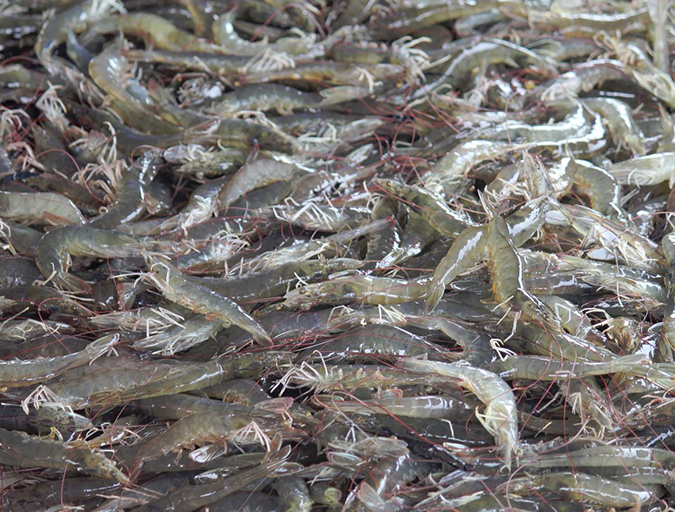
Health & Welfare
Four AHPND strains identified on Latin American shrimp farms
Two virulence genes are known to encode a binary photorhabdus insect-related toxin that causes acute hepatopancreatic necrosis disease in shrimp. The pathogenicities of these V. campbellii strains were evaluated through laboratory infection and subsequent histological examination in P. vannamei shrimp.
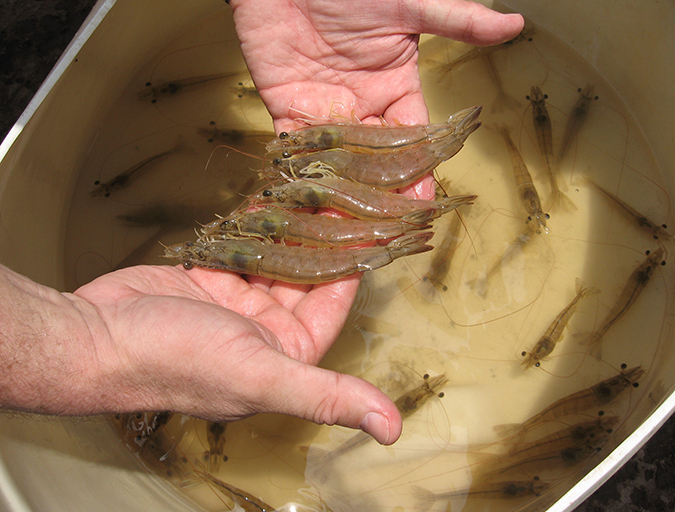
Health & Welfare
PCR methods characterize AHPND V.p isolates
In analyzing the plasmid sequence from the whole genome sequences of AHPND V. parahaemolyticus (V.p) isolates, researchers identified a clear geographical variation within the plasmid, and developed PCR methods to characterize AHPND V.p isolates as either Mexico-type or Southeast Asia-type.


